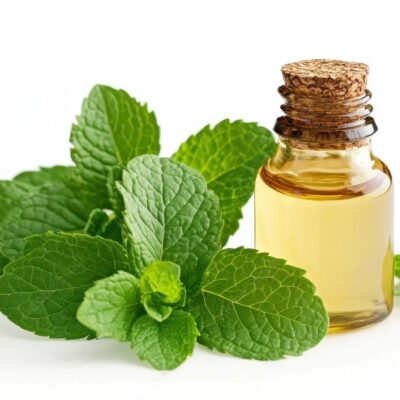The global
opacifiers market is experiencing a dynamic phase of transformation, shaped by shifting consumer preferences, increasing demand from end-use industries, and continuous innovation in material science. Opacifiers are vital additives used across a broad spectrum of applications where opacity, whiteness, and light scattering are required. These materials improve visual appeal, enhance product performance, and contribute to the durability of end-products. This blog offers a deep dive into the opacifiers market, focusing on key segmentation by type, application, and geography.
Understanding Opacifiers and Their Industrial Significance
Opacifiers are materials that reduce the transparency of a substance by scattering or absorbing light. They are commonly used to create an opaque or white appearance in products such as paints, coatings, plastics, ceramics, and paper. In functional applications, they contribute to covering power, UV protection, and chemical resistance.
The increasing need for high-performance materials in construction, automotive, packaging, personal care, and other industrial sectors is fueling the demand for opacifiers. The market is witnessing a rising emphasis on eco-friendly and cost-effective alternatives, driving innovation and competition among manufacturers.
Market Segmentation by Type
The opacifiers market can be segmented into several key material types, each with unique properties and industry relevance:
1. Titanium Dioxide (TiO₂)
Titanium dioxide remains the most widely used opacifier globally. Known for its excellent whiteness, brightness, and high refractive index, TiO₂ is a preferred choice in paints, coatings, plastics, and cosmetics. Despite concerns about its environmental impact and regulatory scrutiny in some regions, the demand remains strong due to its unmatched performance.
2. Opaque Polymers
Opaque polymers are increasingly used as partial or complete replacements for titanium dioxide, particularly in the paint and coatings sector. These synthetic polymers create voids that scatter light, reducing the need for high pigment loads. They offer benefits such as improved cost efficiency and formulation flexibility, especially in water-based systems.
3. Zircon
Zircon-based opacifiers are primarily used in ceramics, especially tiles and sanitaryware, due to their high thermal stability, chemical resistance, and excellent opacifying power. With rising construction and infrastructure activities globally, zircon opacifiers are in growing demand.
4. Zinc Oxide
Zinc oxide serves as an opacifier in ceramics, glass, and rubber products. It provides UV protection and antimicrobial properties, making it useful in sunscreens and personal care formulations. The material is gaining attention in the development of safer, multi-functional products.
5. Cerium Oxide
Cerium oxide is primarily used in high-tech applications such as glass polishing, optical filters, and catalytic converters. Its role as an opacifier is more niche but growing in specialized ceramics and electronics markets due to its redox properties and high refractive index.
6. Antimony Trioxide
Antimony trioxide is commonly used in flame-retardant applications but also serves as an opacifier in certain glasses and plastics. Regulatory pressures around its toxicity have limited its usage, pushing the market towards safer alternatives in some regions.
Market Segmentation by Application
The versatility of opacifiers enables their use across diverse industrial and consumer-facing applications. Key application areas include:
1. Paints and Coatings
This is the largest application segment for opacifiers, particularly for titanium dioxide and opaque polymers. Opacifiers in this sector improve hiding power, enhance aesthetics, and provide durability and weather resistance. The shift toward water-based and low-VOC formulations is influencing the choice of opacifiers used.
2. Plastics
In plastic manufacturing, opacifiers enhance whiteness, improve UV resistance, and offer cost reduction by replacing more expensive resins or pigments. Packaging, automotive interiors, and household goods represent major sub-segments where opacity and visual quality are crucial.
3. Ceramics
Opacifiers play a pivotal role in the aesthetics and performance of ceramic products, especially tiles and sanitaryware. Zircon remains the dominant opacifier in this space due to its superior properties under high-temperature processing.
4. Paper
Opacifiers in paper manufacturing are used to improve printability, brightness, and ink absorption. Though the paper industry is witnessing moderate growth, demand persists in specific niches like high-quality print media and packaging.
5. Inks
In the inks sector, opacifiers ensure color vibrancy and print clarity, particularly for packaging and labeling. Titanium dioxide is predominantly used, though newer materials are being explored to meet environmental regulations and performance standards.
6. Fibers
Textile and synthetic fiber industries use opacifiers to improve the visual texture and feel of materials. These are often used in apparel, home furnishings, and technical textiles, especially where white or pastel finishes are desired.
7. Others
Other niche applications include cosmetics (e.g., creams and lotions), construction materials (e.g., plasters and sealants), and electronics. The increasing convergence of functional and aesthetic demands is creating new avenues for opacifier innovation.
Market Segmentation by Geography
Geographically, the global opacifiers market is characterized by varying levels of industrialization, regulatory landscapes, and end-user demands. Key regional insights include:
1. North America
This region maintains a robust demand for opacifiers, driven by advanced construction, automotive, and healthcare industries. There is a growing preference for sustainable alternatives due to regulatory oversight and consumer awareness, particularly in the U.S. and Canada.
2. Europe
Europe represents a mature market where innovation and environmental compliance play a crucial role. The EU’s regulatory framework encourages the use of eco-friendly materials, pushing companies to invest in R&D for safer and more sustainable opacifiers.
3. Asia Pacific
Asia Pacific is the fastest-growing region in the global opacifiers market, led by China, India, and Southeast Asia. Rapid urbanization, industrialization, and rising consumer incomes are driving demand across construction, packaging, automotive, and personal care industries. Local production capabilities and cost advantages make this region a hotbed for manufacturing and export.
4. South and Central America
This region is emerging as a key player in sectors such as ceramics and construction. While the market size is relatively smaller, opportunities are expanding due to infrastructure development and increased investment in local manufacturing capabilities.
Future Outlook and Emerging Trends
The global opacifiers market is on a path of steady growth, fueled by technological advancements, regulatory shifts, and evolving consumer preferences. Trends such as the development of bio-based and low-VOC opacifiers, nanotechnology integration, and circular economy initiatives are expected to shape the next wave of innovation.
Key challenges include fluctuating raw material costs, environmental regulations around titanium dioxide and other heavy metals, and the need for scalable alternatives. However, opportunities abound for companies that can align product performance with sustainability goals and regional market demands.
Conclusion
The opacifiers market is a vital component of many industrial value chains, offering essential functionality in a wide range of products. With diverse material types, expanding application areas, and regional growth prospects, the market presents significant opportunities for stakeholders. By focusing on innovation, environmental compliance, and market-specific strategies, companies can effectively navigate this evolving landscape and secure long-term success.





